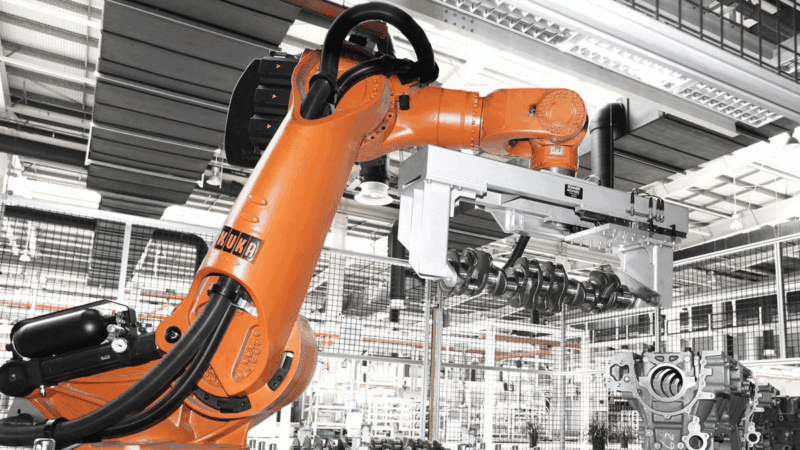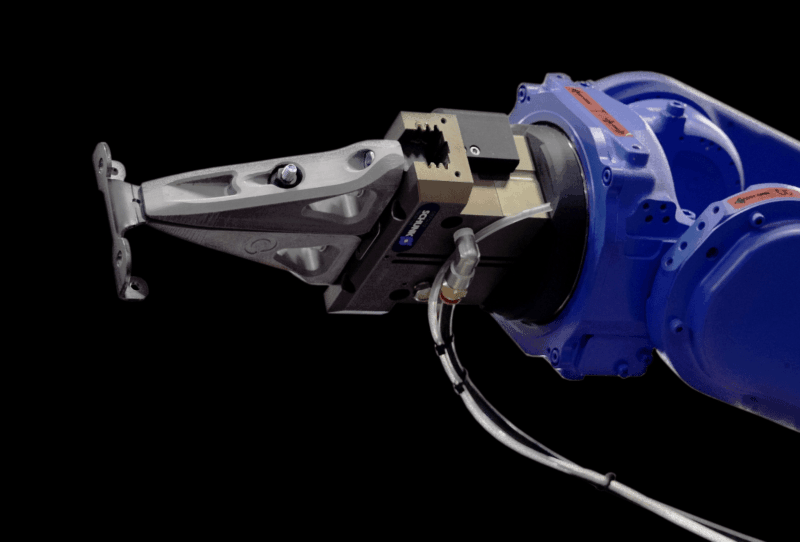
Is Additive Manufacturing Changing the Prognosis of Supply Chain Disruptions?
Any single supply chain disruption carries cascading consequences. When businesses can’t obtain the needed resources on time — due to events like supplier outputs falling behind schedule, items getting stuck in shipping or logistical complications, or simple shortages of in-demand supplies — businesses can’t obtain what they need to produce their goods and services for consumers, or other businesses.
Consequently, this causes businesses to miss out on sales and growth opportunities, while their potential buyers similarly miss out on goods and services that they need. Apple reported missing out on $6 billion in sales due to an ongoing chip shortage. And when these shortages strike, prices soar, like in 2021 when an aluminum shortage jacked aluminum prices up by over 50%. The end result of higher material prices is widespread cost inflation for consumer goods.
Experts predict that these supply chain disruptions will continue well past 2022. However, a federal program called Additive Manufacturing Forward (discussed later in this blog), which is facilitating widespread adoption of AM technologies, offers a promising supply chain fix for U.S.-based manufacturers. If successful, the plan will be a blueprint for manufacturers worldwide to build more efficient international supply chains.
What do “supply chain disruptions” mean for manufacturers?
Supply chain shortages pose a critical threat to manufacturing operations today. Recent supply chain shortages are taking place on a global scale, and companies have been experiencing unprecedented levels of difficulty procuring the parts they need.
Without the ability to quickly fabricate the needed parts in-house, manufacturing operations can easily stall for however long it takes for the needed part to be built, shipped, transported, and received. These delays, which oftentimes take months, are due to supply chain disruptions that won’t be resolved anytime soon.
Extended production downtime can compromise a manufacturer’s ability to meet critical deadlines, causing serious consequences. It can stifle growth with loss of business and potentially even cause reputation damage.
Comparing AM supply chains vs. disruptable supply chains
Inevitably, every manufacturer will at some point need replacement parts for the factory floor, as well as new tooling for production. They might also have to respond to an urgent, short-notice need for end-use parts, or want to build production parts in low volumes that don’t make sense to build tooling for.
Disruptable supply chains. Manufacturers without access to fast, point-of-need fabrication will have far less efficient supply chains. Even with normal business operations, lead times are much longer (oftentimes taking weeks to months), timelines are less dependable, and the actual ability to obtain the needed supplies is beyond the control of the manufacturer.
With a supply chain stretched out to include multiple parties and processes — going through both the supplier and the shipping service — there are far more opportunities for things to go awry. There can be issues in the supplier’s preparation processes, potential shipping mixups or delays, and even potential quality issues upon delivery. A single disruption at any point in the supply chain will compound these already-lengthy lead times. And if quality issues are present upon delivery, the entire process must be repeated from the very beginning.
Additive manufacturing supply chains. AM-powered supply chains eliminate all of this risk for suitable applications — such as tooling, strong replacement parts, and high-mix low-volume production runs. Having easy, point-of-need manufacturing means that parts can be printed when they are needed, precisely where they are needed. With just a 3D printer, these parts can be printed on site, with lead times of hours to days.
With a cloud-enabled distributed manufacturing model, individual printers can be placed across different geographic locations. Parts stored in the cloud as digital inventory can be sent to any 3D printer in the network for fabrication, skipping the lead times added on by shipping. With just a CAD file, manufacturers can do everything in-house, eliminating dependence on third parties and all of the associated risks.
If an application necessitates that a part is manufactured using traditional machining or molding techniques, using the short lead times of AM for rapid prototyping can ensure that the part design will work as expected when it is eventually fabricated and received.
Analogy for comparison. Think about it this way: biologically, food is a critical “supply chain” component for human life. Everyone needs to eat, and must convert food into energy.
A disruptable supply chain, in this context, would be relying on a single menu item from a single restaurant on the other side of the city as your only source of food. But to get there, you must ride the unreliable city bus, and it takes an hour each way on average. The ability to get food when you need it is therefore a little precarious — any number of happenings related to the restaurant or transportation can bar you from getting dinner exactly at 5:30pm. The restaurant might be experiencing an ingredient shortage, have been temporarily shut down by the food safety inspector, be delayed by a staffing shortage; similarly, the bus can stop due to a flat tire or get stuck in particularly nasty traffic. Without dinner on time, you might not have the energy for planned social gatherings or recreational activities.
For this food analogy, an AM supply chain would be like having a miraculous contraption that turns an easy-to-get spool of complete nutrients into any type of food you’d want to eat. You go on your computer and select what meal you want, and hit a button — then, the contraption prepares the meal for you in just 15 minutes.
Examples. Read how organizations from the U.S. Army to wind energy companies and aircraft OEMs are using additive manufacturing to streamline their supply chains.
Is a widespread supply chain fix emerging? Enter AM Forward
To strengthen the supply chains of U.S. manufacturers, combat inflation, and increase Industry 4.0 adoption amongst smaller domestic manufacturers, the Biden administration launched the Additive Manufacturing Forward program in May 2022. Identifying today’s advanced additive manufacturing technologies as the needed fix for persistent supply chain disruptions, AM Forward aims to build robust and efficient supply chains by reducing common barriers to AM adoption.
AM Forward was launched as a series of agreements between five large manufacturers and their small to medium-sized U.S.-based suppliers. In each of the agreements, the large manufacturers plan to help facilitate additive adoption for their smaller suppliers. Currently, the program has five large manufacturers as its initial participants — GE Aviation, Siemens Energy, Honeywell, Lockheed Martin, and Raytheon.
Through AM Forward, each of these manufacturers will support their smaller, U.S.-based suppliers by:
- Purchasing high volumes of additively manufactured parts
- Providing additive manufacturing training
- Providing technical assistance to support AM adoption
- Contributing to the development of common standards and certification for additive manufacturing technologies and products
Markforged anticipates that this initiative will grow use of additive manufacturing in multiple ways. Demand for additively manufactured parts will sharply increase, while large manufacturers continue to leverage 3D printing’s benefits for even more business processes.
AM Forward also programmatically tackles one of the biggest barriers to scaled AM adoption, by making technical knowledge and assistance more accessible than ever. Knowledge from experience helps companies get the most out of their 3D printers — reducing risk, laying the groundwork for repeatable and reliable processes, accelerating development of in-house expertise, and empowering engineers to design more game-changing parts for innovative applications.
The prognosis?
On the level of individual manufacturers, access to in-house 3D printing is an excellent solution to acute supply chain challenges. Manufacturers can reap a multitude of benefits: shorter lead times, cost savings, less uncertainty, faster product development cycles, and self-sufficiency without a risky dependence on external suppliers.
In the broader scheme of global supply chain disruptions, widespread adoption of AM amongst manufacturing suppliers is a promising fix to the longstanding supply chain woes that continue to plague manufacturers, suppliers, and consumers.
While the AM Forward program is targeted towards U.S. manufacturers and suppliers, America is hardly the only region hosting manufacturers mired in supply chain disruptions. The premise of the program is simple — and though AM Forward is still in its infancy, the world will have a blueprint for solving global manufacturing supply chain shortages if it yields the expected results.

5 Supply Chain Makeovers Powered by 3D Printing

Industry 4.0 in the Context of Professional 3D Printers

Additive Manufacturing in 2022: Why Additive, and Why Now?
All of the blogs and the information contained within those blogs are copyright by Markforged, Inc. and may not be copied, modified, or adopted in any way without our written permission. Our blogs may contain our service marks or trademarks, as well as of those our affiliates. Your use of our blogs does not constitute any right or license for you to use our service marks or trademarks without our prior permission. Markforged Information provided in our blogs should not be considered professional advice. We are under no obligation to update or revise blogs based on new information, subsequent events, or otherwise.
Never miss an article
Subscribe to get new Markforged content in your inbox
